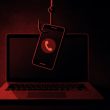Unsealed Document Exposes FBI – Bureau admits using Stingray Devices to Disrupt Phone Service.
FBI’s Stingray secrecy has been compromised and exposed by an unsealed document, a pen register application from 2012. The sealed version of this document was acquired by the ACLU previously but a motion to reject the evidence entailed in the device brought forth the exposure.
According to Kim Zetter at Wired, the application has confirmed that Stingray can disrupt cellphone service.
MUST READ: FBI wants to hide how cops are spying on you via “stingray” cellphone tracker
In the application Scimeca wrote:
“Because of the way, the Mobile Equipment sometimes operates, its use has the potential to intermittently disrupt cellular service to a small fraction of Sprint’s wireless customers within its immediate vicinity. Any potential service disruption will be brief and minimized by reasonably limiting the scope and duration of the use of the Mobile Equipment.”
Especially, the application as well as the approval from the magistrate doesn’t refer the device by its actual or more commonly noted names such as IMSI Catcher, Stingray and/or Cell Tower Spoofer. Instead, it is referred to as “mobile pen register/trap and trace equipment.”
Although the document claims that the device can “mimic Sprint’s cell towers,” but it stays mum about the possible impact of the device’s usage.
It is a widely known fact that Stingray devices can disturb sell service but this kind of on-the-record admission and confirmation of this feature by law enforcement authority is definitely new.
It is claimed in the warrant application that unrelated numbers to those that are being sought will be provided to other cell towers. The question that remains unanswered is that how long it will take before the release happens.
Chris Soghoian, the ACLU’s chief technologist, states that:
“As each phone tries to connect, will say, ‘I’m really busy right now so go use a different tower. So rather than catching the phone, it will release it. The moment it tries to connect, can reject every single phone” that is not the target phone.
However, the Stingray might or might not release phones instantly and disruption can potentially occur during this period.
The issue that the “release” actually encourages is of the amount of disruption that occurs while the device is being used. Cell phone technology advancements have surpassed the capability of Stingray devices to collect caller info and location data. With availability of spontaneous upgrades and law enforcement agencies are clamoring to get their cell tower spoofers updated as well but the overall procedure still requires “dumbing down” all the connections to the least secure and vulnerable to interception connection: 2G.
Stingray exploits the vulnerability in 2G protocol since devices using 2G never authenticate cellphone towers. This means that a fake tower can easily be recognized by these devices as a legitimate tower.
However, since 3G and 4G networks have managed to eliminate this vulnerability, Stingray will probably get these networks jammed in order to downgrade these phones to the vulnerable 2G network for continuing communication.
Thus, is a device is being used and the calls cannot find any better connection, these will be immediately routed to the nearest cell tower spoofer. In such a scenario, the calls won’t be actually connected and text messages won’t be received or sent because the internet service will be knocked offline.
In this way, FBI not just managed to disrupt cell service for searching robbery suspects but also collected huge amount of data of every single subscriber whose phone connected to the spoofer.
Read the documents here:
The FBI refrain from answering questions related to the disruptive side of using Stingray devices but the unsealed document has eliminated the need to retrieve answers from the Bureau. Follow @HackRead









